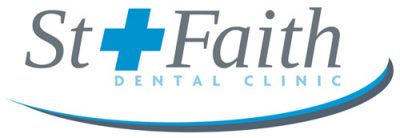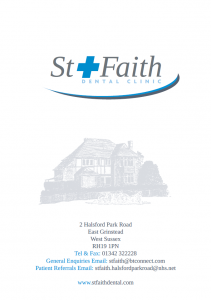Inhalation Sedation
Inhalation sedation means that the sedation is given as a gas. Anxiety is reduced by breathing nitrous oxide with oxygen and occasionally a further sedative, given as a mixed gas. The dentist will give you the gas through a mouth or nosepiece. This will not cover your mouth during treatment. Once you are sedated, the dentist may use local anaesthetic around the site of the dental treatment. Local anaesthetic as a paste is sometimes used to numb the site of the treatment. Any injections you need will then be given through this numbed area to minimise any discomfort.
What to expect
If you have requested a pre-assessment, It is usual to have two appointments. The first appointment will be for an assessment when your dental treatment under sedation will be planned and discussed with you. The dental treatment may take place at the second and subsequent appointments. If the treatment is needed as an emergency, or it is otherwise considered to be in your best interest, it may be possible to have some treatment under sedation at the first appointment.
It is important that you let the dentist know your medical history and any medicines that you are taking.
If you think you may be pregnant, you need to let the dentist know. You may need to come back to have your treatment at another time. You should let your dentist know if you are breastfeeding.
The dentist will confirm whether you need to restrict what you eat or drink on the day of treatment. If you have any questions or are unclear about having your sedation, then do not hesitate to ask your dentist.
As you receive the gas via a nosepiece, you may get a feeling of warmth throughout your body as well as some mild tingling and light-headedness. You will stay awake and in control of all your reflexes, such as coughing.
Once you are sedated with the gas, the dentist may use local analgesia (pain relief that numbs the site of the dental treatment). Local anaesthetic as a paste is sometimes used to numb the site of the treatment. Any injection that you may need can then be given through this numbed area to reduce the chance of any discomfort.
After the treatment
You are unlikely to have any side effects, such as feeling sick or headache. At the end of the procedure, the dentist will give you some extra oxygen to make you feel more alert. This will speed up your recovery from the effects of the sedation.
You will spend time in the recovery area after the treatment is over. You will be checked by the dentist or an appropriate member of the dental team before you go home. It is not always necessary to have someone with you following this type of simple inhalation sedation. You may be advised not to drive a car, ride a bicycle or operate machinery for up to 2 hours following your treatment.
You will be given information relating to any local analgesia and the dental treatment you have received. The dental team will also advise you about any medicines you may need while recovering from the treatment. You will be given a telephone number of who to contact if you have any problems as a result of the treatment.
Inhalation sedation: Parents or those with parental responsibility for children and young people aged under 16 years
What is inhalation sedation?
The child in your care may require dental treatment under inhalation sedation. This will help the child feel less anxious, slightly drowsy and more relaxed for the dental treatment. Inhalation sedation does not make the child unconscious. The child remains awake but may feel warm and detached. The child’s memory of the treatment afterwards may be slightly reduced.
Inhalation sedation means that the child will breathe a mixture of nitrous oxide and oxygen and occasionally a further sedative from a nosepiece placed on the nose. This will have a relaxing effect.
Benefits and risks of inhalation sedation
Inhalation sedation is used to reduce anxiety and fear of dental treatment. This makes the child more co-operative. This is particularly helpful if the child is having a longer, uncomfortable or more complicated procedure. It is a widely used technique.
The dentist and members of the dental team are trained to give sedation. They watch the child closely and treat any problems that may develop. The nitrous oxide is completely breathed out of the body within 30 minutes of the end of the treatment. This means that the child can recover very quickly from this type of sedation.
The dentist will give the child some oxygen at the end of the sedation to help prevent the child feeling a bit sick or having a headache.
The child will be asked to wait until the dentist has checked that he or she has fully recovered from the sedation. The child will not be allowed to go home with you until the dentist has checked this.
What to expect
It is sometimes necessary to have two or more appointments. At the first appointment (assessment), the dentist will take a full dental history of the child. Various methods of providing the dental treatment with or without sedation will be explained. Where necessary, the treatment will take place at the second or subsequent appointments.
If it is agreed that dental treatment with inhalation sedation is the best way to treat the child, then the dentist will confirm the child’s medical history. If further information is required, the child’s general medical practitioner or specialist will be contacted.
How to prepare your child Before the treatment: The child in your care can eat normally but with only a light meal being taken up to 2 hours before the treatment. Please give the child any routine medicines as normal. Any medicines or inhalers that the child may need should be brought to the dental treatment appointment.
Written consent will be required from the parent/carer before any treatment can be given to the child. If you have agreed and signed the consent form at the assessment appointment, and you are then unable to attend on the day of the treatment, the child must be accompanied by a responsible adult (over 18 years of age).
The child should wear loose, comfortable clothing. No valuables should be brought to the appointment.
If the child is unwell on the day with cold/flu symptoms or any contagious illness, please contact the team for advice. The appointment may need to be rearranged.
Please avoid bringing other children with you on the day of treatment.
What will happen during the sedation?
During the procedure, the child will breathe the nitrous oxide and oxygen and occasionally a further sedative drug through a mouth or nosepiece on the nose. The child may feel warm with tingly fingers and toes.
Once the child is sedated, and feels drowsy and relaxed, the dentist can use local analgesia (pain relief that numbs the site of the dental treatment). Local anaesthetic as a paste is sometimes used to numb the site of the treatment. Any injections that the child may need can then be given through this numbed area to reduce the chance of any discomfort.
When the dental treatment is completed, the nitrous oxide mixture will be stopped and replaced with oxygen. The nosepiece will be taken off, and the child will be sat up in the dentist’s chair and will continue to recover fully for a few minutes. The dentist or a member of the dental team will monitor the child during recovery.
The child will be able to leave the surgery/dental practice once he or she has fully recovered, is alert and is not feeling dizzy. This usually takes about 30 minutes after the treatment has ended. The child will be checked by the dentist before being allowed to go home.
The child may not participate in organised or active sports for the rest of the day but may be able to return to school. The dentist will discuss this with you. The child can eat and drink normally after the treatment but care should be taken if areas of the mouth are still numb to avoid lip, cheek or tongue biting. You will be given information relating to any local analgesia and the treatment the child has received. The dentist will explain which pain relief medicines the child may have while recovering and the local analgesia wears off.
You will be given a telephone number of who to contact in case of any concerns.
 Hello! I am Fluffy the Bear
Hello! I am Fluffy the Bear
Find out how magic air sedation helped me at my recent trips to the dentist.


